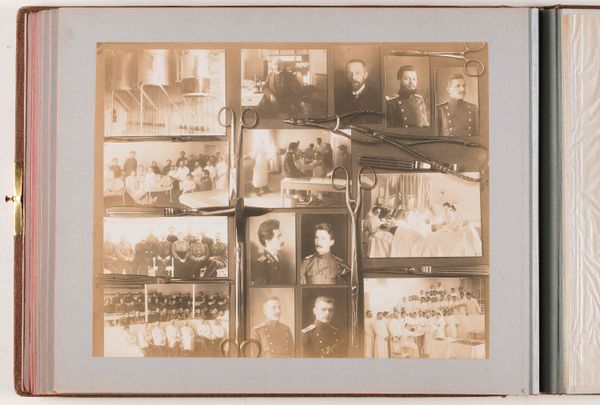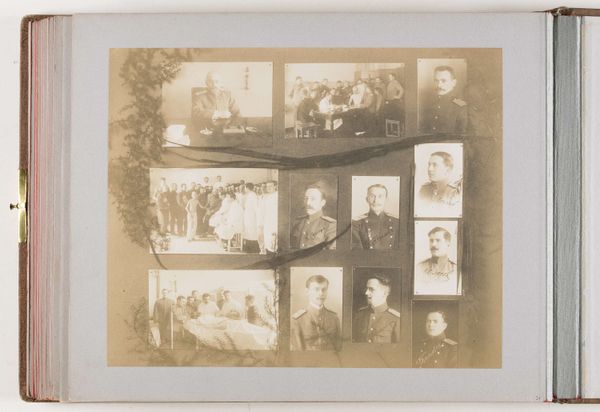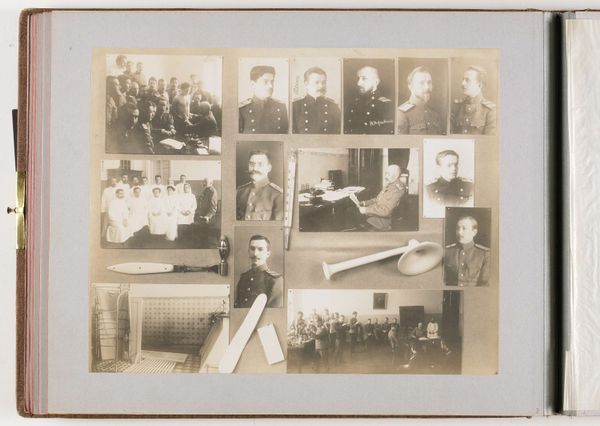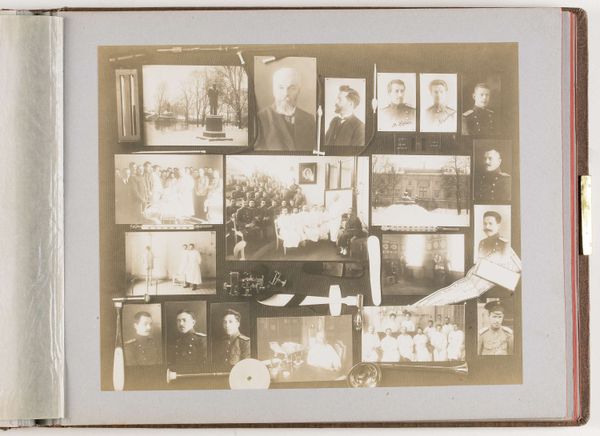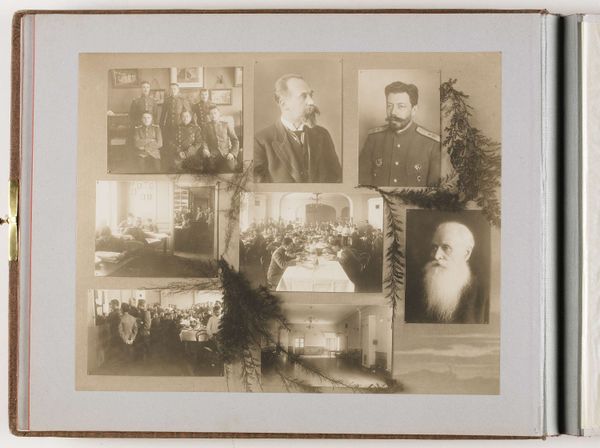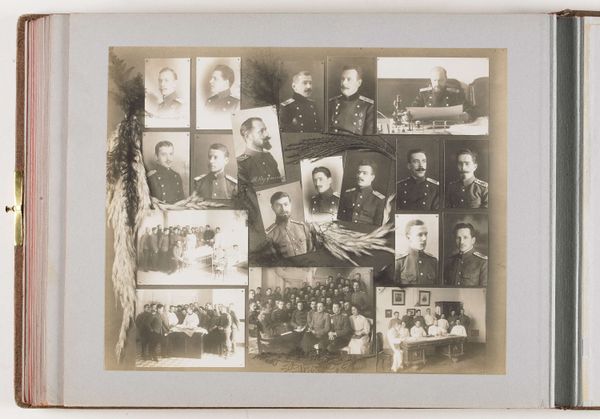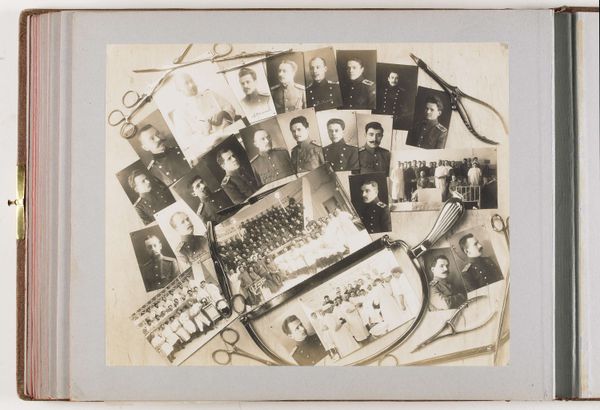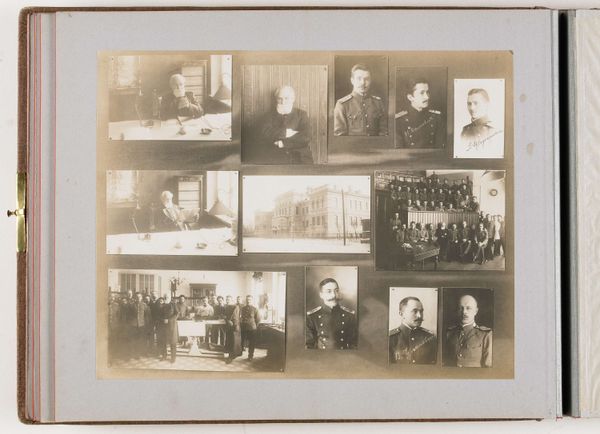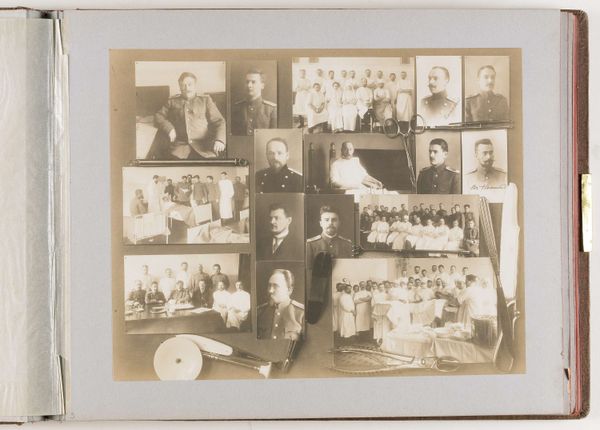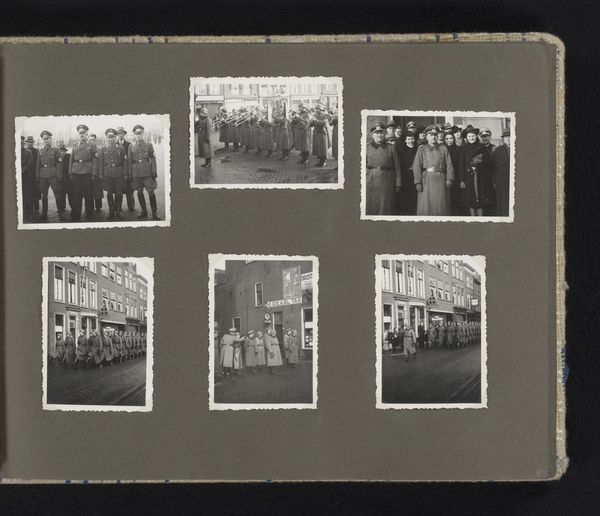
Compositie van veertien foto's van personen en onderwijs aan de Keizerlijke Militair-Medische Academie, gecombineerd met decoratie van brillen en medische instrumenten 1913
0:00
0:00
photography, photomontage
#
portrait
#
photography
#
photomontage
#
group-portraits
#
academic-art
#
early-renaissance
#
realism
Dimensions: height 225 mm, width 291 mm
Copyright: Rijks Museum: Open Domain
Curator: What a fascinating, albeit slightly eerie, photographic arrangement. My eye is immediately drawn to the stark juxtaposition of faces and objects. Editor: Indeed. What we have here is a photomontage created in 1913 by V. Sabel'skij, titled "Composition of fourteen photographs of people and education at the Imperial Military-Medical Academy, combined with a decoration of glasses and medical instruments". Curator: Medical education presented as a constellation of austere portraits and shiny tools. It makes me consider the position of the student; framed between these distant gazes of authority and the cold, clinical instruments. What are the power dynamics at play within these academic spaces? Editor: Power, yes, but also a deliberate ordering. Notice how Sabel’skij has arranged the images. The portraits create a perimeter, a controlled space within which the more chaotic scenes of learning and practice are contained. The eyeglasses and instruments aren't randomly placed; they are arranged to create lines and shapes that guide the eye, unifying the composition. It's a carefully structured visual field. Curator: Structure, definitely. Yet, it also hints at a discomfort, don't you think? These are images documenting an institution rooted in early 20th century Imperial Russia—a place where hierarchical power and potential for social mobility are violently intertwined, and very much impacted by military actions. Look at the way some of these medical tools hover almost menacingly. Editor: A fair reading, given the context. Still, I can't help but focus on the photomontage as a work of art, and that requires an understanding of visual language—the use of contrasting textures, light, and dark… Curator: Visual language is inherently embedded in broader discourses of history and politics. Considering the socio-political backdrop is crucial, wouldn't you agree? Especially in this time of unrest and calls for revolution. The pursuit of knowledge isn’t separate from these larger struggles for equality and justice. Editor: Of course, those currents were present. Perhaps that tension between the drive for progress and social inequality is exactly what makes this particular artwork so compelling to this day. Curator: Agreed. Ultimately, the beauty here lies in its layers of historical resonance. It leaves us contemplating how spaces of learning were – and still are – reflective of the broader social forces surrounding them.
Comments
No comments
Be the first to comment and join the conversation on the ultimate creative platform.


